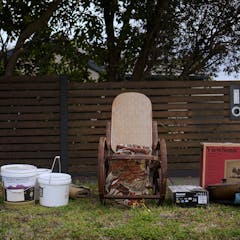
Artikel-artikel mengenai Waste
Menampilkan 1 - 20 dari 234 artikel

Some littering is conscious, some is created unintentionally. Tackling the reason it was created could make clean-up tactics more effective.

The more plastic, the more waste we produce. It sounds simple, but this discovery could help us find ways of ending plastic pollution.

An essential part of managing a growing global waste problem is sorting, recovering and recycling it. But you won’t see this on children’s shows that feature waste collection.

It’s often challenging to live up to your new year’s resolutions – but becoming greener is surprisingly easy.

Understanding the success of the ABC’s War on Waste is a lesson in behavioural psychology. Research reveals five ways to guide other entertainment-education interventions to similar success.

Brands like Zara and H&M are teaming up with recycled textile producers but more collaboration is needed.

Pulverised fuel ash can be recycled and used to manufacture concrete as well as other products.

Sydney’s 14 wastewater treatment plants could be modified to also accept food waste, research shows. The ‘anaerobic digestion’ process would produce energy as well as nutrients for reuse.

New research shows that Americans may have absorbed public messaging about the importance of recycling too well.

Returns cost companies billions of dollars in lost sales. They also generate emissions and packaging waste. Two logistics experts offer some tips from psychology for more sustainable returns.

The overarching goal of Indigenous cultural practices is to prevent the overconsumption of resources that underpins society’s throwaway culture.

The UK needs to fix its recycling system for a more sustainable future.

Confusion about what should and shouldn’t be recycled? You’re not alone – and it’s causing some people to ignore recycling altogether.

Companies like it when your phone breaks and you have to buy another. But we’d all save a lot of money if we could actually repair the things we purchased.

While recuperating heat from data centres to ease greenhouse energy demands is better than letting it go to waste, we must not overlook the complex implications of these two newly merging industries.

Humans generate a lot of trash, but there are cheaper and safer ways to handle it than loading it on rockets.

The recovery rate from construction and demolition waste has been rising steadily in Australia. However, the use of recycled materials is still not the norm across the construction industry.

Criminals want your waste. Here’s what you can do to help tackle illegal fly-tipping.

Not everything needs to be Marie Kondo-ed just because it doesn’t ‘spark joy’. Ask yourself if there’s a less wasteful option.

Many countries export their plastic waste abroad – but the mismanagement of this plastic waste is one of the leading causes of plastic pollution in nature.
